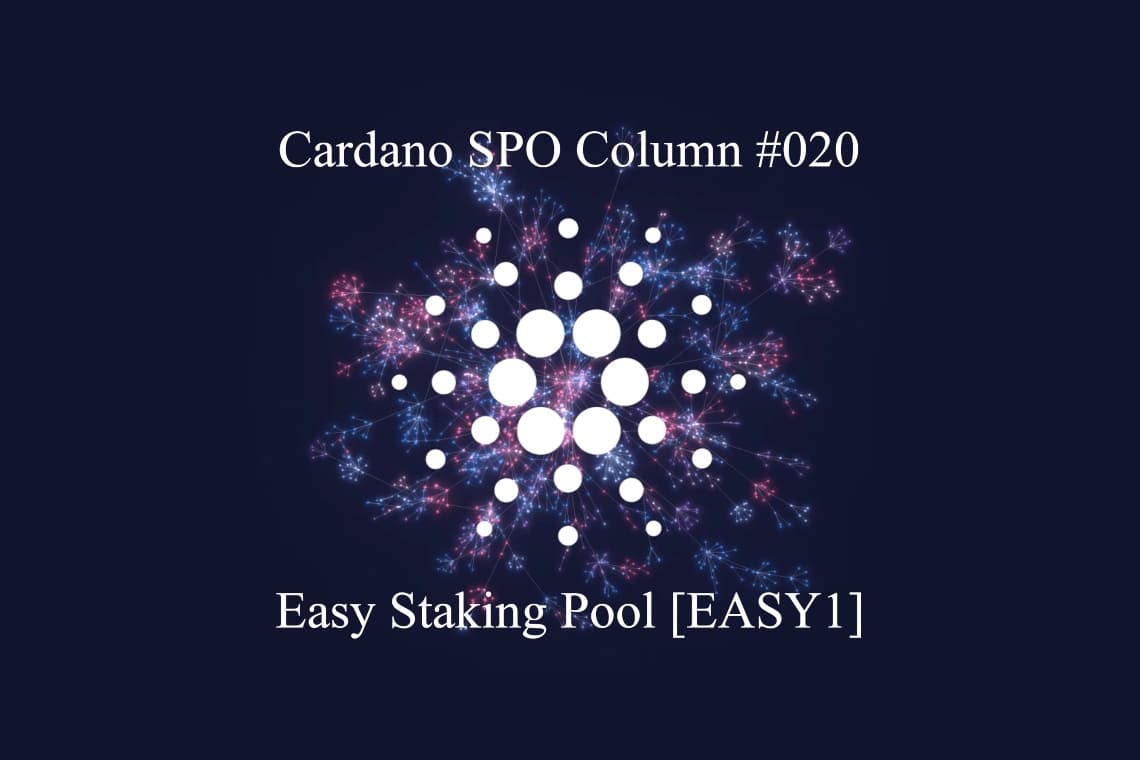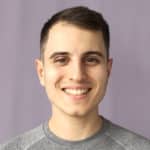This week’s guest on the Cardano SPO Column is a Single Pool Operator whose mission is to make staking ADA as simple as possible while running on energy efficient hardware, making it even more eco friendly: Easy Staking Pool [EASY1].
Last week’s guest was a mission-driven stake pool committed to a decentralized Cardano network and cleaning up the oceans.
This initiative is a point of reference for everything Cardano and every week or two we will invite a Stake Pool Operator (SPO) to answer some questions and give us an update directly from within the Cardano community.
Considering that many of our readers are new to the crypto space, we will have a mix of simple and technical questions.
Ciao Giovanni, glad to have you here. Tell us about yourself, where you are based and what’s your background.
Hello everyone and thanks for inviting me to participate in this fantastic column. My name is Giovanni Gargiulo and I am a Principal Software Engineer with 16 years of experience in Java/Scala. In the last years I have been working on eCommerce platforms with cloud technologies in Machine Learning and Artificial Intelligence.
I am originally from Naples where I graduated in 2005 in Computer Engineering and, after three years working in Italy, I moved to Dublin, Ireland, where I am now married and have a 4 year old daughter.
At work I specialize in distributed cloud systems. During my last work experience I led the implementation of a “product classification” system, where the software we created used Machine Learning algorithms to determine the type and characteristics of objects in online shops by simply processing the name and description of the product.
When did you discover Cardano and how do you think it compares to other blockchains?
I discovered Bitcoin in 2013 and was always fortunate to have colleagues who, like me, were interested in the topic. In late 2017, while chatting in the office about crypto, I discovered Cardano through the famous youtube video of Charles Hoskinson’s whiteboard session in which he explains the three pillars of Cardano: scalability, interoperability and governance. In the video I immediately appreciated the scientific approach through which Charles Hoskinson identifies the pros and cons of first and second generation blockchains (whose greatest representatives are respectively Bitcoin and Ethereum) and explains what technical limitations had to be overcome in order to finally create a blockchain that could be used effectively and efficiently in everyday life.
In support of his theories, Charles Hoskinson’s team invested time and resources in the publication of scientific articles (known more generically as “papers”) in which specialists in different areas of the crypto industry scientifically demonstrated the security and reliability of methodologies previously adopted in the crypto world but not yet proven. Among the 100+ publications by the Cardano team, one that stands out is that of cryptography specialist Prof. Aggelos Kiayias in which he demonstrates the reliability and effectiveness of Ouroboros, Cardano’s consensus protocol based on Proof of Stake.
For me, therefore, what deeply distinguishes Cardano from other blockchains is the methodical and scientific approach with which Cardano ecosystem is built.
A couple of months ago you left your job to dedicate yourself full-time to Cardano, how’s that going for you and what’s ahead?
Although I had been watching it for years, my adventure with the Cardano blockchain began on 27 October 2020, when I launched my own Stake Pool: EASY1, whose motto is “delegating your ADA has never been easier”. The Stake Pool originally ran on Raspberry PIs, ultra-low power devices.
Besides the scientific approach with which Cardano is developed, the two aspects that fascinate me most are the eco-sustainability of the blockchain and the continuous interactions that IOHK (the company that develops Cardano) has had with institutions and governments in places like Africa, where blockchain technologies can represent a real possibility of financial and political redemption for these peoples.
However, the traditional software industry is profoundly different from the blockchain industry, where the technical challenges are quite different. It was precisely this challenge that was the key that prompted me to take the leap. In April 2021 I announced that I was quitting my job to start studying Cardano’s Smart Contracts. Since then I have learned the foundations to be able to develop Smart Contracts in Cardano through the Plutus Pioneer Program, and I have gained an excellent knowledge of blockchain and related systems.
During these months I have been actively involved in Cardano open source projects such as Dandelion and I participated in Catalyst’s Fund5 where I was one of the winners with the following proposal. For the next few months my focus will remain on developing software tools and educational materials so that I can continue to help facilitate and grow the adoption of Cardano. In the future, perhaps as early as the new year, I hope to become an expert developer of smart contracts on Cardano.
What is the Plutus Pioneer program and what has your experience been so far?
The Plutus Pioneer Program is an online course, taught on YouTube by the head of education at IOHK Prof. Lars Brünjes. The course is taught in English on the following channel. Professor Lars is a Haskell programming genius, and is extremely informative in his lectures. However, Haskell is not one of the most popular or easy-to-learn programming languages and the course, even for me who has a long experience in programming, was not easy at all. Already in the third week of the course, the ten hours of study per week were not enough and required a lot of independent study and research.
However, Lars and his team are extremely active on the Discord channel and regularly answer students’ questions through Q&A sessions. In these weeks of study, however, the efforts have been rewarded, and although I started from scratch with Haskell and Smart Contracts, so far I have implemented a smart contract to manage auctions on Cardano. Finally, I had the enormous pleasure and honour of being chosen as one of the Pioneers who are participating in the testing of Alonzo (Blue/White and currently Purple). Among my most important achievements is being the first community member to run a smart contract on a public Cardano testnet (video). I also have a YouTube playlist where I discuss many technical and non-technical aspects of smart contracts.
The Plutus Pioneer Program is currently in its second iteration and although it is very well organized, I would not recommend it to anyone new to Haskell or programming in general. Instead, I would strongly suggest completing a Haskell course as a pre-requisite and avoiding many initial headaches.
Thank you kindly for your time. Any final comments? Where can people find you?
Thank you for the interview.
Quitting my job to devote myself entirely to Cardano has been the craziest yet most rewarding decision I have ever made. The amount of new knowledge I am gaining is immeasurable and the people I am meeting along the way are fantastic.
Cardano has huge potential and it’s up to us community members to lay the foundations for Cardano to flourish and become one of the leading blockchains of the future. So if you feel like supporting me, you can join my Telegram group and delegate to my Stake Pool EASY1. I also created a stake pool gamification portal where my delegators can compete for ADA prizes at every epoch (every 5 days) at the following address.
My social channels: Twitter, Youtube, Website.
Disclaimer: The opinions and views of the SPOs are their own and do not necessarily reflect those of the Cardano Foundation or IOHK.




